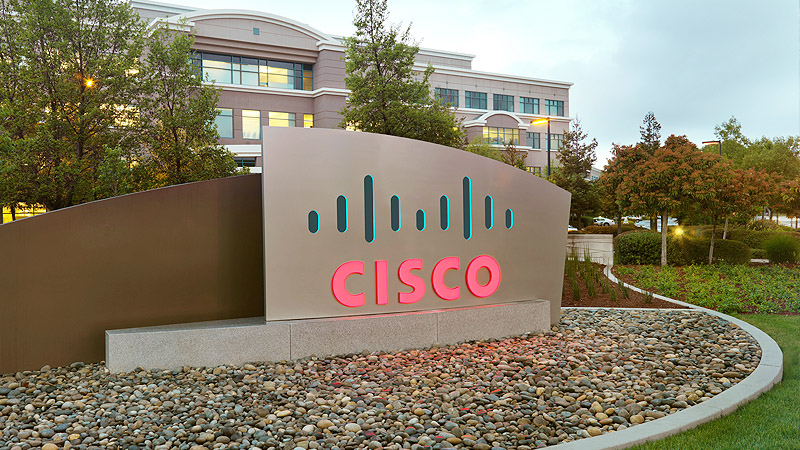SAN JOSE, Calif., May 23, 2000 Cisco Systems, Inc. today unveiled its five-phase Unified Communications (UC) software strategy. The Cisco UC strategy is based on an open, scalable, software platform that today equips enterprise and service provider companies with full-featured unified messaging (UM) services (voice, e-mail and fax) combined with real-time call management and notification services. Cisco's five-phase UC software strategy extends its value proposition by leveraging the UC platform to enable future service offerings including device independent delivery, access to Internet and application content and integrated transaction services.
As part of the strategy, Cisco opens its UC platform to ISVs and application providers so that they can quickly and cost-effectively deliver value-added UC services as the market evolves. In support of the platform, leading technology providers have joined the Cisco UC partner ecosystem. The ecosystem will, in turn, allow Cisco to offer carriers and service providers best-of-breed solutions and services as they implement their end-to-end UC offerings.
Cisco also today announced several new companies embracing the Cisco UC platform to quickly and cost-effectively deploy value-added communications services that help them generate new revenue streams and build brand loyalty.
"Companies that move from unified messaging to unified communications by offering enhanced services such as real-time call management, media handling and collaboration are the companies that will thrive," said Blair Pleasant, director of Communication Analysis with The PELORUS Group. "Cisco is helping to lead the industry in this market by delivering an open, IP-based UC software platform that allows for the addition of a variety of enhanced services that are critical to the continued growth of the UC market."
"Cisco is bringing to market a unified communications software platform that combines our uOne technology with the strength of our networking solutions. This platform not only provides our customers with unified communications services to meet their needs today, it offers them a strategy for the addition of new value-added services and content in the future," said Bill Wolfe, general manager, Unified Communications Software Business Unit, Cisco Systems, Inc. "As carriers and service providers look to differentiate themselves through enhanced communications offerings, the Cisco UC platform and software strategy provide them with the vision and tools to grow and succeed."
The Cisco UC Strategy and Platform
Based on the Cisco uOne technology, the Cisco UC platform architecture provides a flexible, open and scalable environment that enables service providers and carriers to deliver anytime, anywhere communications services that are device and media independent. For the enterprise market, the platform provides complete voice messaging functionality through the integration of uOne with Cisco's Architecture for Voice, Video and Data (AVVID). uOne for the enterprise is available with Cisco CallManager 3.0 on specific versions of Cisco's Media Convergence Server.
Cisco today delivers on phases 1 and 2 of the strategy with its uOne technology. Building on this in phases 3, 4 and 5, service providers can implement value-added communications services, including intelligent agent applications, automated speech recognition capabilities and wireless applications. The five-phases of Cisco's UC strategy include:
Phase 1: IP Unified Messaging Services
Messaging services provide a scalable, open messaging application designed to integrate with best-in-class third party components. Features of messaging service applications include e-mail, voice mail, fax and unified messaging. Customer benefits of this phase include increased brand loyalty and improved revenue per subscriber. End-users benefit by consolidating the barrage of daily business and personal voice, fax and e-mail messages into a single mailbox accessible from any device (mobile, land line, PC or Web) regardless of time, media or location.
Phase 2: IP Communications Services
IP communications services unify real-time communications with unified messaging services. For the first time, users can respond to an e-mail, fax or voice message with a real-time connection to the message sender, place the message in context of a real-time conversation and return to the UC software to take the appropriate action. Further, users can screen inbound calls and choose to take them or send them to voice mail. Service provider customers can move from service-based revenue to usage-based revenue by unifying real- time call management with messaging services.
Phase 3: Content Services (Access and Delivery)
Content services build on phases 1 and 2 by providing access and delivery of Internet data, to both IP messaging and IP communications services. Service providers benefit by moving from flat-fee or usage-based revenue to transaction-based revenue on value-added customer services. End users gain increased control over their businesses and personal communications by unifying all their communication avenues, including inbound call screening and messaging with access to personalized delivery of Internet content.
Phase 4: Transaction Services
Transaction services offer network infrastructure support for e-commerce management and exception handling through the Cisco UC platform. By unifying e-commerce transactions with the power of Cisco UC messaging, communications, and content services, users can define how, when and where they wish to be notified of critical events. They can also choose the response methods appropriate to each situation: real-time communication, messaging, or call/message routing. Service providers gain additional transaction-based revenue by providing value to the e-commerce purchasing chain. Users gain even more control over their personal and business communications.
Phase 5: ISV/Third-Party UC Application Platform
The ISV/third-party UC application platform opens all the features, functions and benefits of prior phases to application and Web developers. With phase 5, third-party ISVs, systems integrators and solution providers can enhance and extend Cisco Unified messaging, communications, content delivery and transaction-based services. Features of this phase include the ability to enable unified communications services through the proven application environment of Cisco ecosystem partners. Benefits include the ability to leverage the third-party development community to sustain and improve transaction-based revenue with innovative applications and services.
Technology Providers and New Customers
The Cisco Open Packet Telephony (OPT) architecture establishes the foundation for the UC platform in service provider environments and allows Cisco to create an ecosystem of partners who work together to develop best-of-breed solutions. These solutions give companies greater choice and faster time to market. A broad range of technology providers have embraced the Cisco UC platform and are working with Cisco to implement UC offerings. Current UC ecosystem partners include:
- HP for best-in-class software including network management and internet usage metering, industry leading highly available server platforms, OS infrastructure, and professional services
- iPlanet E-Commerce Solutions, a Sun-Netscape Alliance, for high performance, scalable message store, message transfer, and directory solutions using proven LDAP directory and user management services for rapid, efficient service provisioning and management of mixed media services to any client, anywhere
- Software.com for message store and carrier-scale LDAP services that provide a truly scalable, reliable, available and extensible infrastructure for storing and forwarding messages anywhere, anytime, from any device
- Sun Microsystems Netra[tm] for carrier-grade servers which are specifically designed for deployment in network environments that require continuous application rugged, rack-optimized packing and are easily integrated into existing communications equipment
- Lernout & Hauspie (L&H) for text-to-speech applications which convert any computer readable text into intelligible, human sounding synthetic speech, enabling users to have e-mails and faxes read aloud via a phone
- Nuance for speech recognition capabilities that provide access to information and Web content through speech
- Open Port Technology for managed fax delivery services such as store-and-forward fax and broadcast fax
Additionally, a broad range of carriers and service providers have selected the Cisco UC platform to provide enhanced communications services to their customers. These companies include Group Telecom and global VoIP carrier iBasis. Several new customers have also embraced the Cisco UC platform including CentreCom, CMA, FairPoint Communications, NHancement Technologies, and Videotron.
For more information on the Internet Communications Software Group, please visit http://www.cisco.com/go/icsg. Access the ICSG online press kit.



